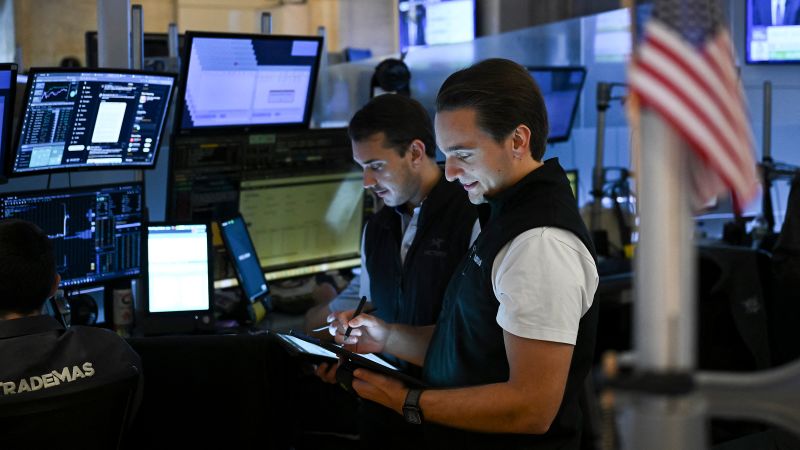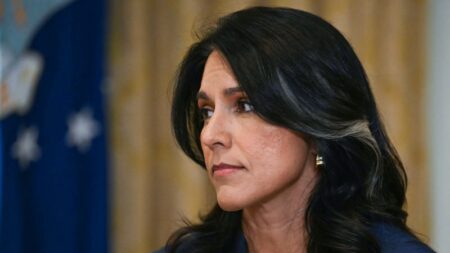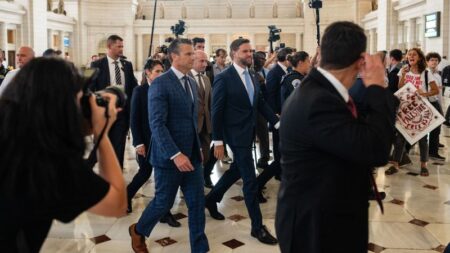President Donald Trump’s administration has recently announced plans to implement new tariffs starting on August 1, leading to mixed reactions among investors and economists alike. While many in the financial market appear unconcerned, presuming that Trump will reconsider or delay these tariffs—as he has in the past—the White House maintains that this time, they are genuinely committed to following through on their trade policies.
The reaction from Wall Street has been one of indifference, suggesting that many investors believe any potential fallout from these tariffs could be mitigated. This sentiment has led aides in the Trump administration to interpret the market’s calmness as a sign that global corporations are already adapting their operations in anticipation of the administration’s trade strategies, which have notable potential to be disruptive. Unlike the previous atmosphere of panic that led Trump to reconsider his initial tariffs back in April, the current stock market has actually seen new highs even amid escalating trade tension.
A significant factor contributing to this heightened confidence in the administration’s stance is the recent establishment of several trade agreements. Officials at the White House have expressed optimism that the economic resilience displayed in the markets is a validation of their strategies rather than a cause for concern. This perspective has been famously critiqued by analysts as embracing the notion of “Trump Always Chickens Out” (TACO), as many investors continue to doubt the seriousness of the impending tariffs.
As the date approaches, there is mounting anxiety regarding Trump’s proposed tariffs on various key trading partners, including nations such as South Korea, the European Union, and India. The Trump administration has made some progress in establishing trade frameworks with several countries, including China, Vietnam, and Japan, but the outlined agreements suggest significantly higher tariffs compared to previous ones. The implications of these tariffs could be extensive, with potential disruptions to global supply chains and retaliatory measures from affected countries further complicating international trade dynamics.
Experts warn that such escalations could have dire consequences for the financial markets, potentially risking billions of dollars as companies scramble to adapt to the high stakes of increased tariffs. Comments from industry insiders indicate that skepticism genuinely exists; many believe Trump may ultimately delay or rescind the tariffs. However, as Sarah Bianchi, a former trade official, pointedly observed, if the president defiantly enforces these tariffs, the market’s assumptions about his perceived leniency may lead to serious repercussions.
As the self-imposed August 1 deadline looms, the stakes continue to rise for both the administration and its trade partners. There’s a palpable urgency among these countries to negotiate agreements that would prevent the imposition of higher tariffs. The economic repercussions of such tariffs are already being felt, as seen in recent drops in Quarterly profits among major companies like General Motors. Critics are voicing concerns that the current market stability could be deceptive, with prices in certain sectors, such as clothing and home goods, beginning to reflect inflationary pressures.
Despite these warning signs, White House officials exhibit a resilient confidence, asserting that the economic indicators, such as inflation rates, remain steady and do not suggest detrimental effects at this phase. The administration’s growing assurance appears emboldened by the lack of immediate fallout experienced to date, further pushing their agenda aggressively forward.
The ongoing negotiations, especially with the EU, are expected to continue until the deadline. Although these discussions signal a pathway for potential relief from higher tariffs, skepticism remains that Wall Street may be overly optimistic without concrete agreements. Beyond the August deadline, Trump still envisions a landscape where all international trading partners are subjected to at least a 10% tariff, leaving no room for complacency amid these negotiations.
In summary, as Wall Street remains buoyed by intermittent optimism regarding potential trade agreements, the implications of Trump’s tariffs cast a complicated shadow over the economic landscape, prompting caution among economists about potential long-term impacts and unforeseen consequences. As the days draw closer to the critical August deadline, the balance between confidence and caution becomes increasingly precarious in the realm of international trade and financial stability.











